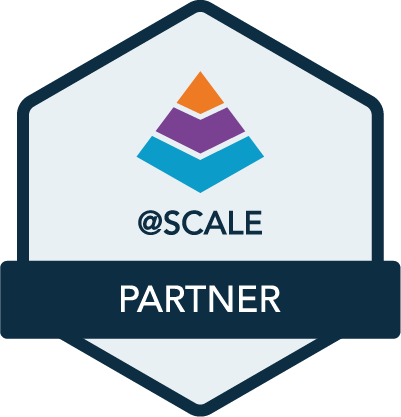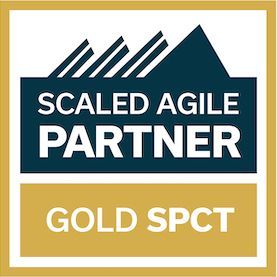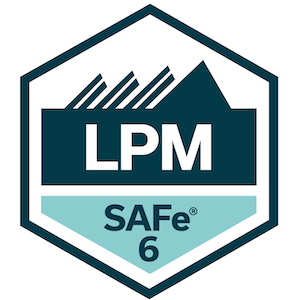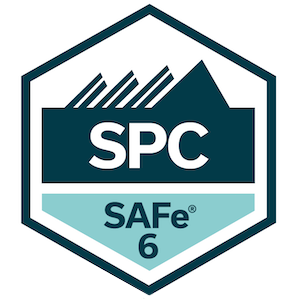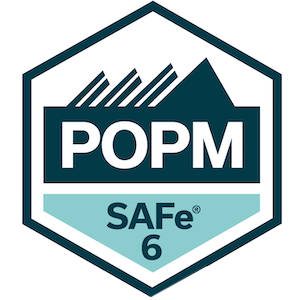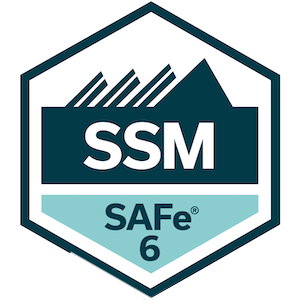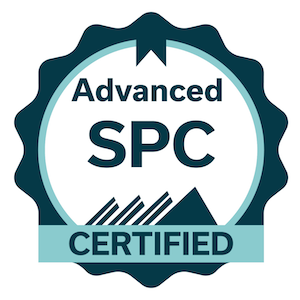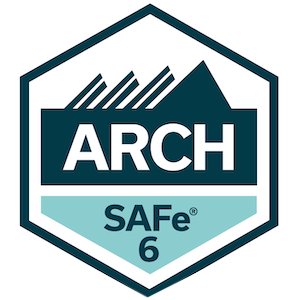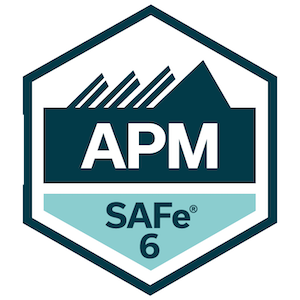
Ian Spence
Scagilize Network Partner (Trainer & Consultant), Advisor & SAFe Fellow
Ian Spence on:
How Lean is Your Business Case?
Working with A3 Lean Business Cases
In this new series of blogs, we will be looking at using an A3 Lean Business Case and how this impacts portfolio management.
We’ll start with an initial post looking at the case for one-page lean business cases and how they compare with the more traditional, longer business cases in use within many more-traditional organizations.
The Case for One-Page Lean Business Cases
Being Lean with A3 Business Cases
Does Size Matter?
The figure below summarizes the type and style of business case I’ve come across in my many years involved in the software industry.
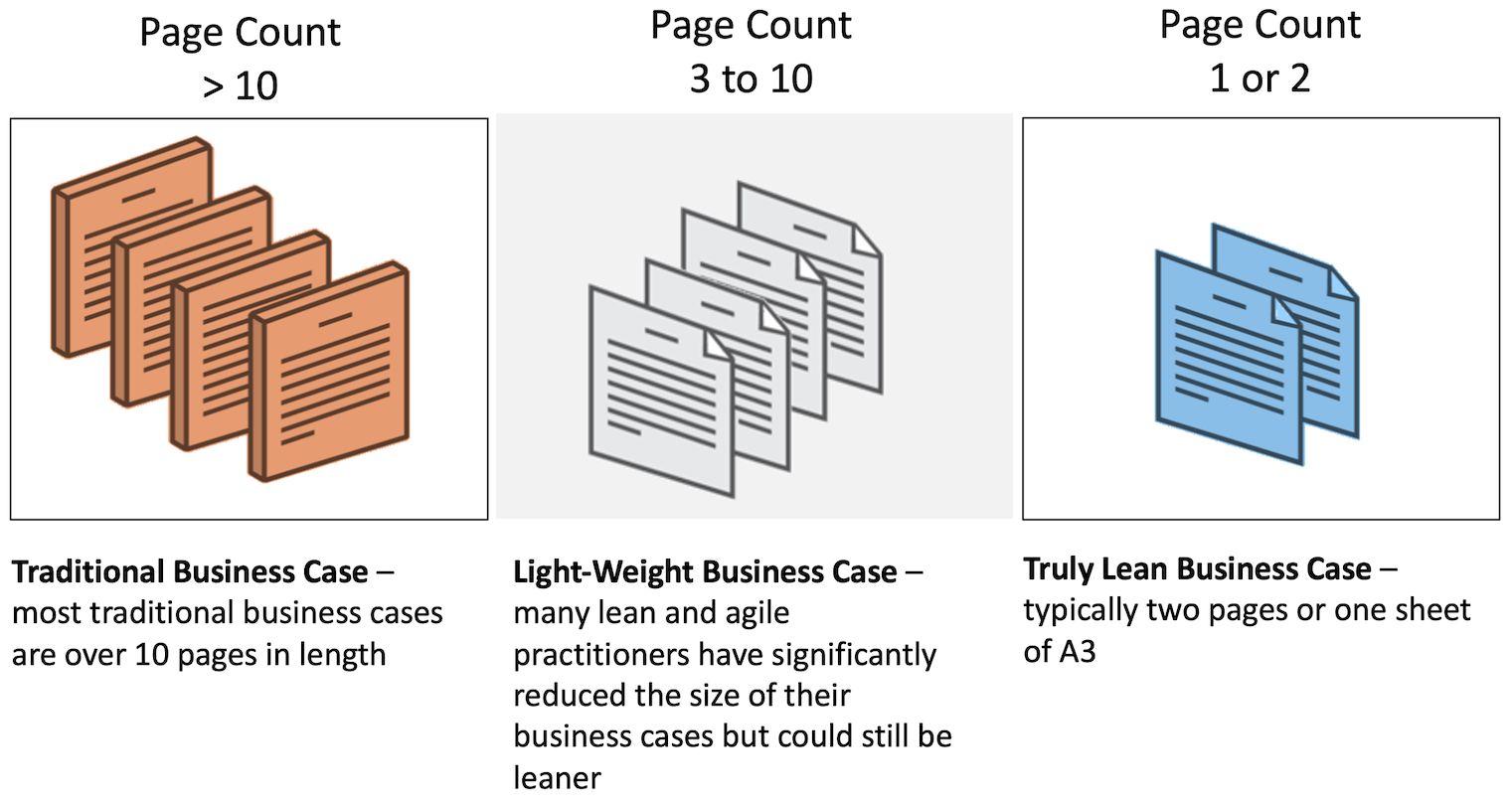
Figure 1: The Range of Business Case Sizes
In most organizations, business cases are large – more than 10 pages in length.
In some organizations I’ve visited where they have adopted a lean and/or agile approach they’ve managed to reduce this to the 3-to-10-page range with, sadly, the majority closer to a full 10 pages than a succinct 3 pages.
Personally, I'd like it to be one or two pages.
This can be quite difficult to achieve, as most of the templates that are available are three or more pages before any content has been added.
This size range is not unexpected as Business Cases have many flavours, styles and purposes – from describing the business vision, to presenting and selling the idea, to detailing the business plan, to marketing the proposed product, to acting as a catalyst for decision-making and prioritization. In most cases, there’s a lot of different information for a lot of different audiences crammed into the one document, the overall purpose of which has become lost in the mists of time.
What is the purpose of a Lean Business Case?
The role of a Lean Business Case is to provide a ‘living’ summary of the pros and cons of pursuing a specific business opportunity by starting a new piece of work, one of significant cost and impact (typically taking the form of a new initiative, product, project, program or epic).
It exists to enable this opportunity to be compared with any other in-play business opportunities.
It should be a living document that is 1) kept up to date to reflect progress and market changes, and 2) referred to at least once a quarter when prioritizing future and ongoing work.
The role of a traditional business case often goes beyond this with the intention of:
- Providing a compelling case for the approval of the initiative
- Outlining and / or detailing the business plans for the product to be produced
- Capturing all the information gathered prior to receiving a go / no-go decision on the
development work - Answering any possible questions that the decision-makers may have
- Being a one-off sales pitch – archived and ignored once approval is achieved
Now this isn’t to denigrate or claim that the information contained in a traditional business case is
unnecessary – it’s just to point out that when using Lean Business Cases this information is captured
separately on an as-needed basis to support the Business Case and any other ongoing activities.
The key differences in approach are summarized in the table below:
| Lean Business Case | Traditional Business Case | Comments | |
|---|---|---|---|
| Content | Just enough detail to establish the proposal’s viability | Lots of detail and broad in scope. | Detailed business cases drive over-specificity too early in the development lifecycle. |
| Size | < 2 pages (A4) | > 10 pages (A4) | |
| Purpose | Trigger Conversations | Avoid Conversations | Traditional business cases endeavor to answer all possible questions and address all possible concerns. They are intended to conclude rather than generate discussions |
| Use | Actively compared with others. Enable comparisons and prioritization with other initiatives | Looked at in isolation. Intended to convince decision makers to progress | Lean business cases require the ‘approvers’ to understand the markets and the business context, and to be active in the development of the business case and related products |
| Audience | Active, informed decision makers | Passive, detached approval bodies | |
| Consulted | Constantly - The Lean Business Case is constantly referred to and kept up to date to reflect progress and lessons learned | Once - Traditional business cases are typically fire and forget. They are occasionally revisited as part of a post-implementation review but generally never seen again | The decision whether or not to progress the initiative will be revisited at least once a quarter based upon the current market circumstances and whether or not the business case still holds |
| Support | Lean and Agile Business Practices / Iterative and Incremental Decision Making / Rolling Funding | Waterfall / Big Design Up-Front / Fixed Price Purchasing Models | Lean Business Cases are intended to support the active steering of the business. They generally lack the precision required for more deterministic ways-of-working |
| Availability | First version available inside a month. Continuously revised and kept up to date. | First version in 3 months or more. Fire and forget – archived once it is approved | To be effective with Lean Business Cases you must move fast and light. If they are just a management summary of a traditional 30-page Business Case then you will not achieve any of the benefits of adopting a truly lean and agile approach |
| Dependent On | The generation and validation of a Minimal Viable Product (MVP) and other on-going experiments | Availability of funds: funding is typically all or nothing | If you go down the route of using A3 Lean Business Cases then it is essential that you adopt an experimental, risk-driven incremental approach to the development |
The important thing to note here is that the Lean Business Case is a snapshot in time that is intended to be constantly revisited and validated by ongoing experiments and demonstrations, whereas the more traditional business case is intended to present a comprehensive case for undertaking a very specific plan of action.
A3 Thinking and the 3 Cs
The idea behind the one-page Lean Business Case brings together two common lean and agile practices:
- A3 Thinking – A lean technique from Toyota, the most popular application of which is the Problem-Solving A3 Template
- The 3 Cs – Card, Conversation and Confirmation. An agile technique, popularized by Ron
Jeffries, for evolving consensus about the specific actions to take
A3 Thinking
A3 thinking is a collaborative process-management and improvement tool developed by Toyota. The applications of an A3 are broad. It can be used for problem-solving, decision-making, planning or reporting of a specific issue from the proposal stage to commissioning.
The A3 process has many benefits. It helps us follow a thinking process, facilitates communication, and builds consensus. It stimulates learning, forces us to focus on what is a priority, and supports both mentoring and leadership.
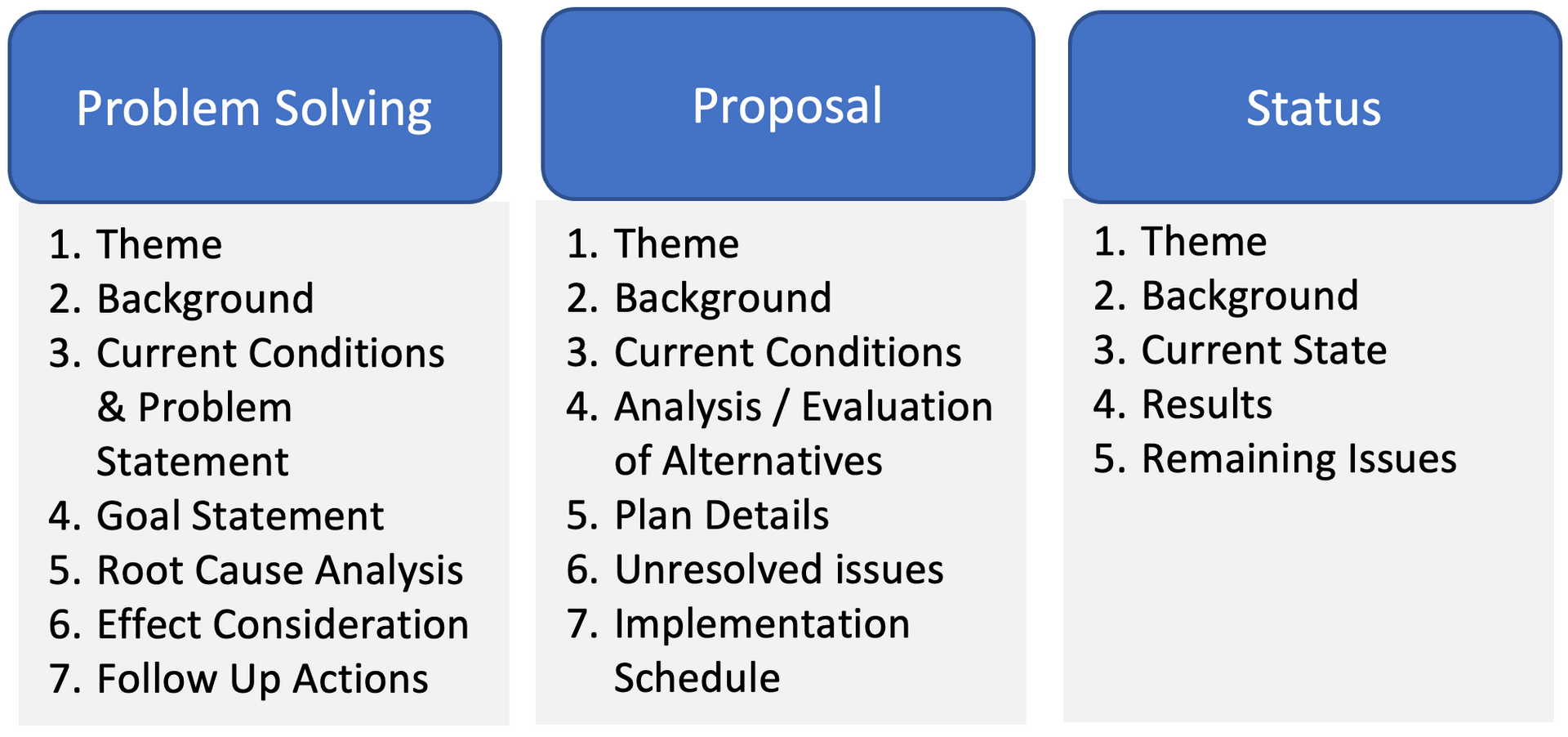
Figure 2: The Three Types of A3 Report
Proposal A3s are for new work. They are in fact already a kind of Lean Business Case. I was talking to an ex-colleague of mine the other day about this topic, and they said, “Oh yeah, we’ve been doing A3 Business Cases for years”. They’d just picked it up from Toyota and got on with it.
The A3 process is great, it has many benefits. It gives you a thinking process, facilitates communication, it helps build consensus. Exactly what we want from our Lean Business Case.
Lean Business Cases and the 3 Cs
The 3 Cs: Card, Conversation, Confirmation is a formula that captures the components of a well-formed backlog item. It is generally associated with the use of User Stories within a team or product backlog, but is equally applicable at the portfolio level.
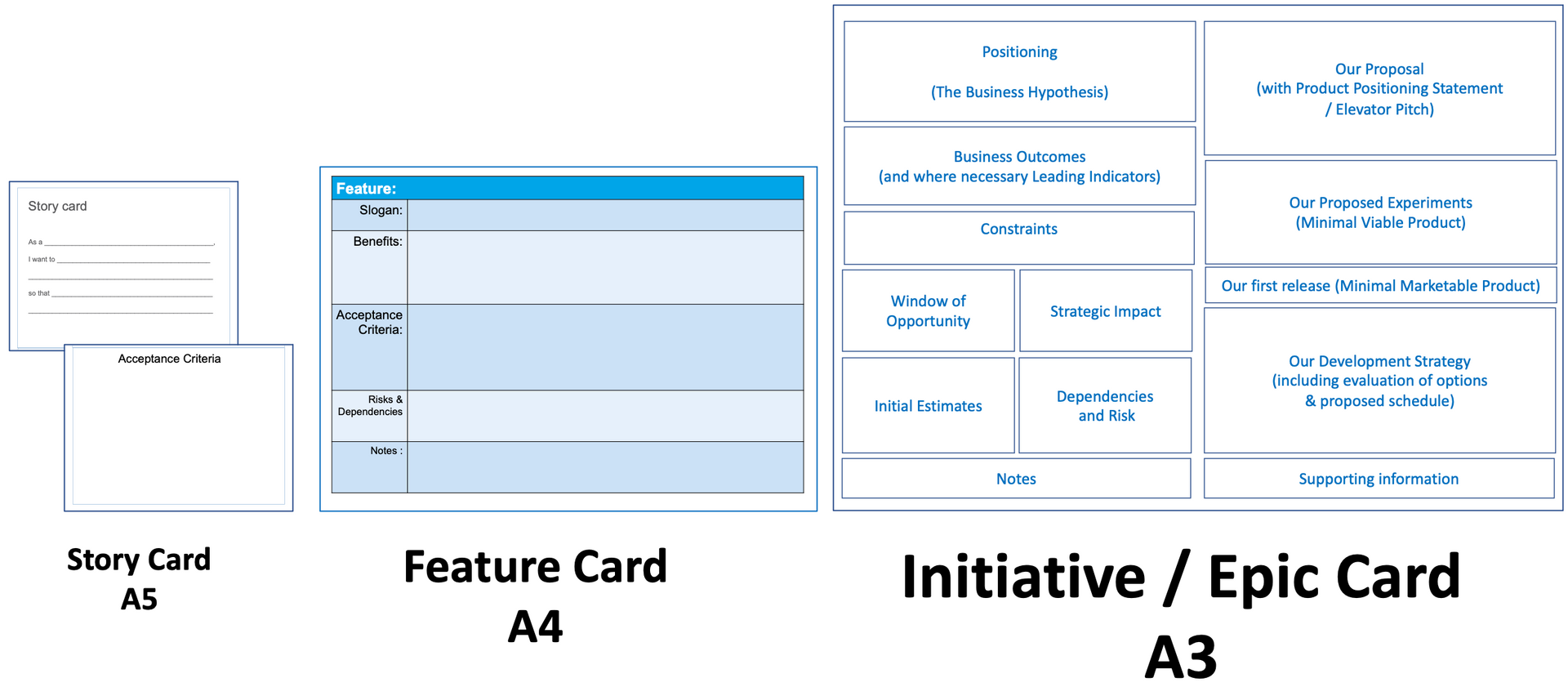
Figure 3: Story, Feature and Initiative / Epic Cards
I’m sure all of you will be familiar with Story Cards; typically index size cards, which turn out to be A5 in size because we write on both the front and back.
When applying SAFe, my colleagues and I generally used an
A4 sheet to capture Features. The bigger the item, the more notes and other things you’re going to want to capture.
As Initiatives (or Epics as SAFe calls them) are even bigger, we take the card up a size, giving us an A3 card.
The important thing is that in all cases these are not formal specifications but placeholders for conversations.
For an Initiative/Epic, this is a placeholder for conversation about whether you want to make an investment, what level of commitment you would like to make, and what level of funding you would like to provide. As Initiatives of this sort are so expensive and inherently risky, it is a good idea to have more than one level of confirmation. A short-term confirmation of the viability of the Initiative via MVPs and other experiments, as well as the long-term verification of progress towards the expected business outcomes.
So, the goal of our A3 Lean Business Case is to act as a placeholder for a conversation about the viability and suitability of undertaking the proposed initiative whilst clearly capturing both levels of confirmation.
In future blogs in this series, we will present and discuss the pros and cons of a number of different templates, look more deeply into the essential characteristics of an A3 Lean Business Case, go deeper on MVPs as well as discussing how to create an accessible Lean Business Case with measurable, actionable Business Outcomes (and, where necessary, Leading Indicators).
Hopefully this is enough for you to decide if you think an A3 Lean Business Case would be a good option for you, and intrigue you enough to return to read the rest of the series.





